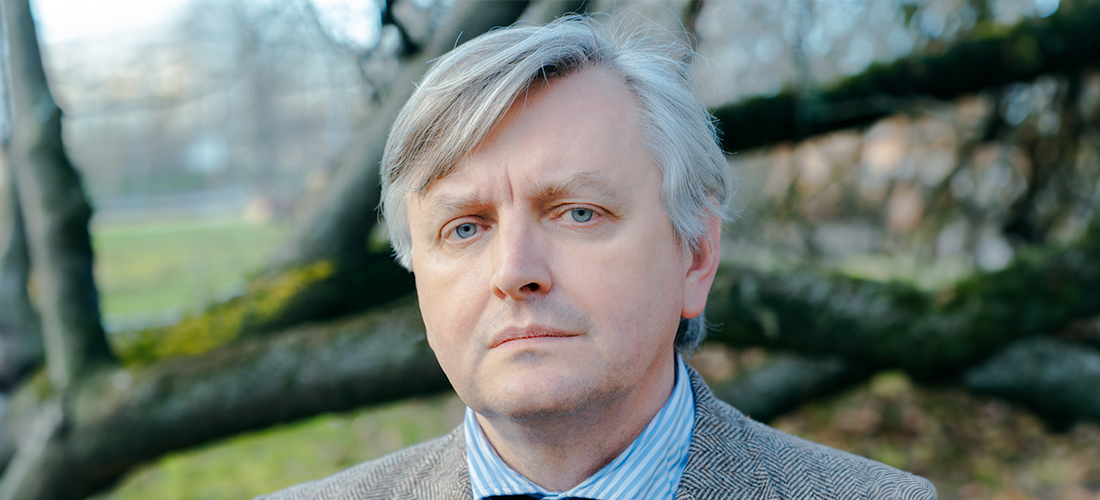Sergei Loznitsa
Sergei Loznitsa
“XXXXXXXXXXXX”
BIOGRAPHY
Sergei Loznitsa was born in Baranavichy (Belarus) on 5 September 1964, though his family soon relocated to Kyiv (Ukraine). Sergei attended the Kyiv Polytechnic Institute in 1987, graduating with a degree in Engineering and Mathematics, after which he began work at the Institute of Cybernetics, developing expert systems and artificial intelligence. He’d been fostering an interest in film, however, and he was offered the opportunity to accept a place at the Russian State Institute of Cinematography in Moscow.
Was it my destiny? Something happened, and I understood that I had things to say. It wasn’t easy. This was right when everything was changing in the Soviet Union. It collapsed, and there emerged this feeling of a new era, freedom… all this hope. The other option was to emigrate to the United States, Switzerland or somewhere else and work as a mathematician.
It was there that he directed his first documentary short, Today We Are Going to Build a House (1996), for which he won an award in Krakow. The next year, he graduated with honours, and his documentaries would be sought after by more and more prestigious festivals, which valued the innovative way he captured his compatriots’ experiences. He hadn’t yet dived into the past or worked with archival material; that began with Blockade (2006), a brilliant compilation of footage from the Nazi siege of Leningrad. Still drawn to the ostensibly simple lives of his compatriots, from this point on, his forays into film archives would grow ever more frequent: he breathed new life into newsreels and propaganda films, the material he used to shape his critical discourse on the history of the USSR.
Film-makers are not dangerous. What’s dangerous are people who don’t think. When it comes to propaganda, we always say, “I’m not responsible for having made it”, or “As a viewer, I’m not to blame; that’s whoever pays for this propaganda”. That’s not true. It’s both: the people who made the propaganda and some of the people who receive that material. Those without sufficient critical judgement accept it and allow themselves to be taken in by it.
His participation in collaborative films with Cristi Puiu and Jean-Luc Godard (Bridges of Sarajevo, 2014), or Wang Bing and Aleksandr Sokurov (L’usage du monde: Vol. 1, 2010), earned him a place amongst the great artists. It was in 2010 that he first ventured into fiction with My Joy, which had its world première at Cannes, a festival to which he returned with In the Fog (2012), a fictional tale set in 1942 in the Nazi-occupied Soviet Union, for which he won the FIPRESCI Prize. Since then, he’s been alternating between fiction and documentary with the same facility he brings to both shorts and feature-length films, assembling a harmonious body of work where each new piece seems to stem from the last.
Every time I make a fictional film, I want to get as close as possible to the line that separates it from documentary. And, at the same time, in my documentaries, I want to stay as close as possible to fiction. In my documentaries, the goal isn’t to show the image that appears before the camera, but rather the concept: the ideas I want to formulate.
Over time, his work has taken a critical position towards the pessimistic post-Soviet reality, weighed down by the heavy burden of history. Putin’s aggressive policies towards Ukraine have therefore become one of the pillars of his work, leading to Maidan (2014), a key point in his career where he used rigorous formal accuracy to depict the civil unrest that broke out in Kyiv’s central square between 2013 and 2014.
Is it possible to conceive of Hamlet without Hamlet’s death? Sacrifice reveals a situation for what it is. It inspires horror, and this horror brings with it a kind of revelation. What’s surprising is that human societies still require tragic sacrifices to be able to form as societies. Freedom isn’t free; there’s always a price to pay for human dignity. The question is whether people are really prepared to pay that price. And if they’re not ready to pay for it, can we call them decent human beings? You should always have something in your life that you would die for. And why are we like this? Why are humans like this?
His creative flow runs at full speed, and most years he’ll come out with two or three pieces with neither the film’s length nor language causing any interruption in his modus operandi. In 2015, he was lauded in Seville for the feature-length film The Event, which coincided with the première in Rotterdam of his short The Old Jewish Cemetery, which was filmed in Riga (Latvia). In it, he explores the site of a former Jewish cemetery, capturing contemporary life in a place where more than 1,000 Jews were killed by the Nazis and buried in mass graves.
The space that old cemetery once occupied is now a site of alienation for anyone who comes into contact with it. What’s to be done with historical trauma? Should we put it out of mind? While my films don’t really answer these impossible questions, they jump-start a mental process. They pose the question, try to formulate a problem and stimulate the brain.
Festivals fight over his films, with Venice winning the première of Austerlitz (2016) and State Funeral (2019) and Cannes hosting that of Donbass (2018), for which he won the award for best director. It is worth noting that, unlike other film-makers who ascend to the Olympus of creators, Loznitsa has never given up the short film as a means of expression. In fact, in 2020, he made a segment of an anthology film with Jafar Panahi (Celles qui chantent, 2020), which, under the title of A Night at the Opera, takes a humorous look, through the use of archival images, at the galas hosted at Paris’ Palais Garnier in the ‘50s and ‘60s. He also presented Reflections. Director’s Cut, an extended version of his segment from Bridges of Sarajevo (2014), in which a bridge is built between the city’s past and present, with images from 2014 offset by photos of armed men taken during the siege of 1992.
Culture can be snuffed out, and for any strategy meant to avoid that to work, we need time, and we don’t have it because of the rapid speed at which it unravels. Those who have the ability to think are no longer among us. Audiences in the ‘80s were generally critical. That’s not possible today. Our mindset has shifted. Higher-level professionals have been brainwashed. They’re asleep, and they don’t see things as they truly are. And the only thing that can save society is education. It’s necessary because it can help people understand what’s going on.
In recent years, Loznitsa has continued to point his critical gaze at the present and the past of the post-Soviet world. He entered the 2023 edition of MiradasDoc with The Kiev trial (2022), a breathtaking piece of film-making with never-before-seen images from the “Kyiv Nuremberg”, which took place in January 1946 in the USSR, one of the first postwar trials to condemn the Nazis and their collaborators. That same year, Cannes premièred The Natural History of Destruction, which examined perceptions of the phenomenon of the mass destruction of the German civilian population in postwar European literature. One year earlier, he’d used Mr. Landsbergis to revisit Lithuania’s break with the USSR, working with images of protests, Party Congresses and Soviet military intervention. Shortly before that, he presented one of his most astonishing works at Cannes, Babi Yar. Context, a clear demonstration of his mastery of archival material: in this case, of the extermination of 33,771 Jews by Nazi troops in just three days in a ravine on the outskirts of Kyiv.
I spent my childhood in a neighbourhood near Babi Yar. Later, I read the book “Babi Yar” by Anatoly Kuznetsov. At the time, I didn’t aspire to be a film-maker, but I did dream about how I could turn history into a film. When I started on this project, I knew only how the film should begin and end. It all starts with the German intervention in the Soviet Union because the Holocaust began with mass killings in Soviet territory. Even today, 80 years after the tragedy in Kyiv, there is no consensus, no existing historical narrative that calls upon society to name, to understand and to preserve the memory of that tragedy.
Miguel Ángel Pérez Quintero
MiradasDoc Programmer
“XXXXXX”.





